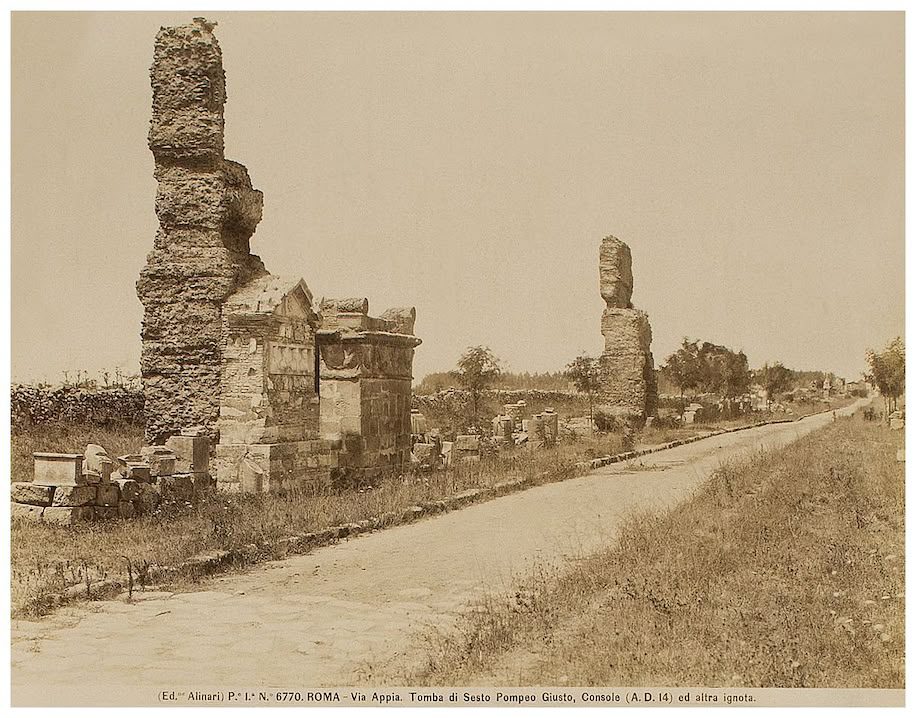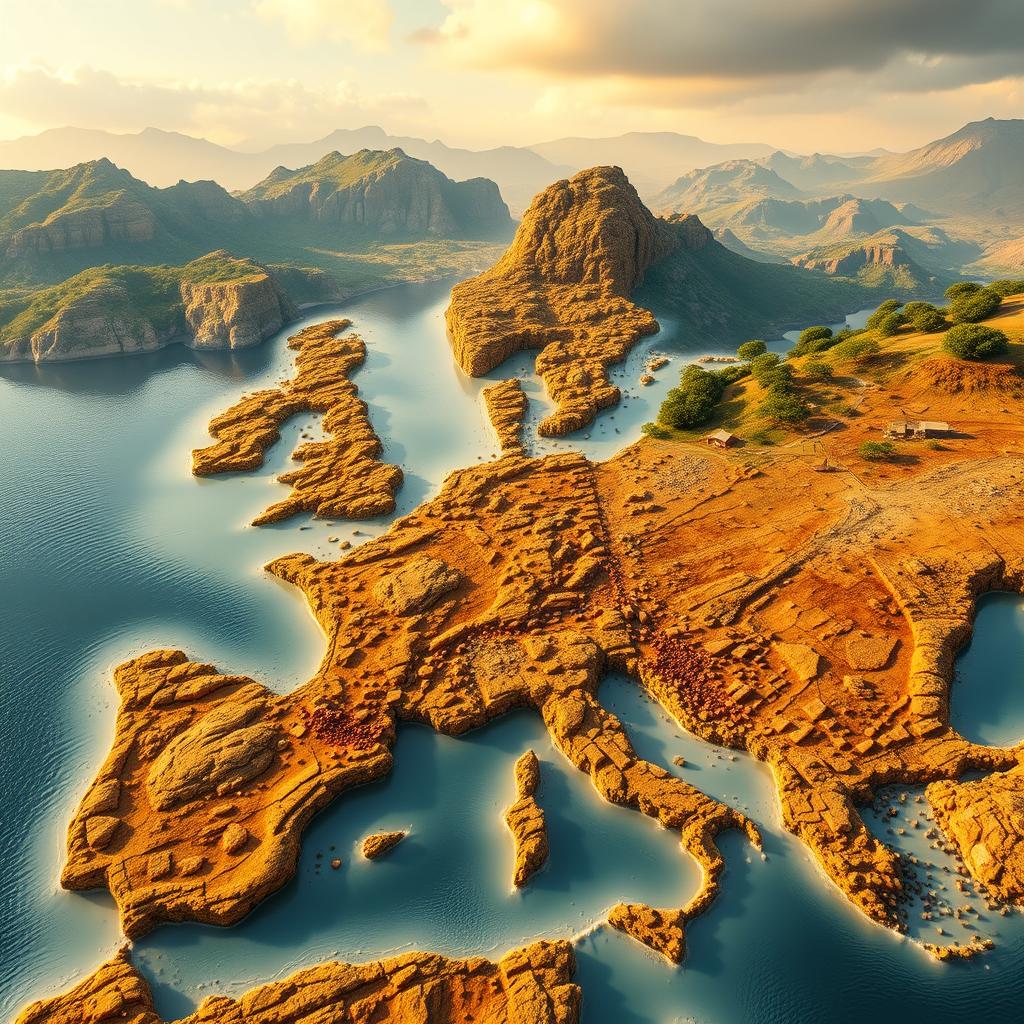The Ancient Architects of Your Modern Wallet
The smooth asphalt highway you drove on this morning exists because Romans built it first. The international shipping container bringing your latest online purchase follows maritime routes established before the birth of Christ. Even the global banking system transferring your paycheck shares DNA with commercial networks created by toga-wearing merchants two millennia ago.
Rome never truly fell. It simply transformed into the invisible infrastructure of our modern economy.
While history classes may have taught you about Roman aqueducts and coliseums, they likely skipped the economic revolution that truly made Rome eternal. Behind the legions and marble temples operated a sophisticated commercial network that established the fundamental patterns of trade, finance, and infrastructure that still govern our economic lives today. This network wasn’t just influential—it was transformative, establishing precedents so fundamental we’ve forgotten they were inventions at all.
The problem is this collective economic amnesia. When we fail to recognize the ancient blueprints still governing our commercial world, we miss crucial insights about why our systems work the way they do—and how they might be improved. Most critically, we lose the perspective that would allow us to see our economic challenges through the lens of historical solutions that stood the test of millennia.

Economic historian Dr. Maria Lafferty puts it bluntly: “Modern financial systems didn’t emerge from a vacuum. The Romans solved foundational economic problems with such ingenuity that we’ve built our entire global economy on their original templates, often without realizing it.”
The Via Appia: How Roman Road Engineering Created Today’s Supply Chain Revolution
Construction began in 312 BCE on what would become the most important infrastructure project in Western history. Appius Claudius Caecus, a Roman censor and statesman, commissioned a road that would initially connect Rome to Capua, about 132 miles to the southeast. Eventually extending to Brundisium (modern Brindisi) on Italy’s Adriatic coast, the Via Appia—the Appian Way—became known as the “queen of long-distance roads.”

What made this road revolutionary wasn’t just its existence but its construction. Previous roads followed the contours of the landscape, winding around obstacles and frequently becoming impassable during bad weather. The Via Appia, by contrast, was engineered to be as straight as possible, cutting through hills and spanning valleys with bridges and viaducts. Its surface consisted of multiple layers: a foundation of rubble and mortar, a middle layer of gravel and sand for drainage, and a surface of tightly-fitted polygonal basalt stones that remain intact in some sections today.
This engineering marvel transformed the economics of overland transport. Before the Via Appia, moving goods overland was so expensive that it was cheaper to ship items by sea around the entire Italian peninsula than to cart them across even relatively short land distances. With the new road system, the cost of land transport dropped dramatically, enabling the movement of bulk goods that previously would have been economically unfeasible to transport.
The economic revolution unleashed by the Via Appia and the vast road network it inspired (eventually totaling over 250,000 miles throughout the empire) created the first truly integrated market economy in the Western world. Suddenly, producers could reach consumers hundreds of miles away, specialization became profitable, and regional economic interdependence flourished.
Fast forward to today’s just-in-time delivery systems and the modern logistics revolution. The fundamental principles established by the Via Appia—straight, engineered routes; durable, all-weather surfaces; standardized widths accommodating vehicular traffic; and public maintenance ensuring reliability—remain the cornerstone of our global supply chain infrastructure.

When Amazon promises same-day delivery or when fresh produce from California reaches New York grocery stores, you’re witnessing the culmination of principles established by Appius Claudius over two millennia ago. The Interstate Highway System in the United States, initiated by President Eisenhower in 1956, follows the same engineering principles as the Via Appia, and serves the same economic function: reducing transport costs to enable market integration across vast geographic areas.
Even more profoundly, the Roman road system established a pattern of development that persists in today’s economic geography. Cities that grew at key junctions of Roman roads—like London (Londinium), Paris (Lutetia), and Frankfurt—remain major economic hubs today, demonstrating how these ancient infrastructure decisions literally shaped the modern economic landscape.
Dr. Jonathan Kemp, transportation economist at Stanford University, explains: “The remarkable persistence of Roman road networks in determining modern economic geography suggests that initial advantages in connectivity create path dependencies that last for millennia. Your GPS is essentially navigating Roman trade routes, even when you’re using the latest satellite technology.”
Mare Nostrum: How Roman Maritime Law Still Governs Global Shipping
While the Via Appia revolutionized land transport, it was Rome’s mastery of Mediterranean sea lanes that truly globalized their economy. The Romans called the Mediterranean “Mare Nostrum”—”Our Sea”—and their dominance of these waters created the world’s first truly international maritime commercial system.

Before Roman control, the Mediterranean was plagued by piracy and fragmented by competing naval powers. Trade existed but remained high-risk and limited in scope. Under Roman hegemony, piracy was suppressed, harbors were standardized, and a sophisticated system of maritime law emerged that enabled predictable, safe commerce across vast distances.
The Roman development of large-scale merchant vessels deserves particular attention. Their primary cargo ship, the corbita, could carry up to 400 tons of goods—comparable to small modern coastal freighters. These ships followed established sea lanes between major ports like Ostia (Rome’s port), Alexandria in Egypt, and Carthage in North Africa. This regularization of maritime commerce allowed for specialized production and intercontinental trade on an unprecedented scale.
What truly set the Roman maritime system apart, however, was its legal infrastructure. The Romans developed sophisticated legal frameworks governing everything from shipping contracts to insurance policies, maritime loans, and liability for cargo damage. These principles became codified in the Lex Rhodia de Iactu (Rhodian Law of Jettison), which established crucial concepts like general average—the principle that all parties involved in a sea venture should proportionally share any losses incurred during voyage for the common safety.
These legal innovations didn’t disappear with the empire. They were preserved in Justinian’s Digest in the 6th century CE, later incorporated into medieval maritime codes like the Consolato del Mare, and eventually evolved into modern admiralty law. Today’s international shipping conventions, including the Hague-Visby Rules and Rotterdam Rules governing cargo liability, are direct descendants of Roman maritime law.
“When a shipping container leaves Shanghai for Los Angeles today, the contract governing that shipment operates on principles first established in Roman courts,” explains maritime attorney Rebecca Chen. “The concept that carriers are liable for cargo damage unless caused by acts of God or inherent vice comes directly from Roman legal precedents.”

The economic impact of this legal continuity cannot be overstated. Global shipping, which handles over 80% of world trade by volume, depends on standardized legal frameworks that make international commerce predictable and insurable. The ability to transfer risk through marine insurance—a $30 billion global industry—rests on legal concepts first developed for Mediterranean grain shipments to Rome.
Even the physical infrastructure of modern maritime trade reflects Roman patterns. Major Mediterranean ports like Barcelona, Marseille, and Istanbul occupy the same strategic locations as their Roman predecessors. The preferred shipping lanes still follow ancient routes, optimized for prevailing winds and currents identified by Roman navigators through centuries of trial and error.
When you purchase an imported product today—whether Italian olive oil, Chinese electronics, or Brazilian coffee—you’re participating in a commercial system operating on maritime principles established when Roman galleys crossed the Mediterranean. The global supply chain connecting producer to consumer follows both the physical pathways and legal frameworks first established by Roman merchants seeking to feed and supply their sprawling empire.
The Eastern Connection: How Rome’s Silk Road Trade Created Modern Global Commerce
Perhaps Rome’s most enduring economic legacy lies in its role as the Western terminus of the ancient world’s most famous trade network: the Silk Road. While we often associate the Silk Road primarily with China, the Roman Empire served as the crucial Western anchor of this transcontinental commercial system, establishing patterns of East-West trade that continue to shape global commerce today.

The Romans didn’t create the Silk Road—various routes connecting East and West had existed for centuries before Rome’s rise—but they transformed it into a stable, high-volume commercial highway through military pacification, diplomatic agreements, and massive consumer demand. Roman appetite for luxury goods from the East, particularly silk from China, spices from India, and incense from Arabia, created powerful economic incentives that integrated previously isolated production regions into a proto-global market.
The scale of this trade was staggering. Historical records indicate that by the 1st century CE, Rome was importing so much silk that the Senate actually attempted (unsuccessfully) to prohibit silk clothing for men, concerned about both the moral implications of such luxury and the massive outflow of gold to pay for Eastern imports. Pliny the Elder complained that India, China and Arabia were draining the Roman Empire of 100 million sesterces annually—equivalent to billions in today’s currency.
What made the Roman participation in Silk Road trade revolutionary was its development of sophisticated financial instruments to facilitate long-distance commerce. Because direct trade between Rome and China was rare (goods usually changed hands multiple times at intermediate markets), Romans developed complex financial arrangements to manage risk and capital across vast distances.
The societas publicanorum (companies of publicans) represented an early form of joint-stock company, allowing investors to pool capital for major trading ventures. The maritime loan (foenus nauticum) functioned similarly to modern trade finance, providing capital to merchants with repayment contingent on successful completion of the voyage. Most importantly, Roman banking networks developed sophisticated methods for transferring funds across vast distances without physically moving coins, using letters of credit and bill-of-exchange prototypes.
Dr. Emma Chen, economic historian at Oxford University, explains: “The financial instruments developed to facilitate Roman Silk Road trade—particularly the ability to transfer value across jurisdictions without moving physical currency—established the foundational concepts for our modern global financial system. When you use a credit card to purchase goods manufactured overseas, you’re using a sophisticated version of financial technology first developed to move value between Rome and its Eastern trading partners.”
Beyond finance, the Roman Silk Road connection established enduring patterns of international trade relations that persist today. The use of buffer states and intermediary markets to facilitate trade between major powers (like the Parthian and later Sassanian Empires between Rome and China) established a template for complex international supply chains. The practice of maintaining separate treaty relationships with each partner along a complex supply route remains fundamental to modern international trade diplomacy.
Perhaps most significantly, the Silk Road trade established the pattern of complementary economic specialization between East and West that continues to define the global economy. Then as now, Western markets primarily consumed finished goods manufactured in the East, running persistent trade deficits financed through complex financial arrangements. The economic tension this creates—with Western consumers dependent on Eastern manufacturing and Eastern producers dependent on Western markets—has been a defining feature of global economics from Roman times through today’s US-China trade relationship.
The next time you purchase a product manufactured in Asia, consider that you’re participating in a commercial relationship whose basic pattern was established during the Roman Empire. The container ships crossing the Pacific, the letters of credit financing the shipments, and the trade agreements governing the exchange all follow templates established when Roman merchants sought Chinese silk and Indian spices nearly two thousand years ago.

Walking Ancient Paths in Modern Shoes
The lasting influence of Roman trade routes extends beyond infrastructure and legal systems to something more fundamental—our basic understanding of what economic activity should look like. The Roman conception of a market-based economy operating across political boundaries, facilitated by standardized infrastructure, protected by predictable legal frameworks, and financed through sophisticated banking arrangements, has become so deeply embedded in our economic thinking that we rarely question its origins.
This historical continuity offers both reassurance and caution. On one hand, the persistence of Roman economic innovations demonstrates their fundamental soundness—these systems have survived the test of millennia because they effectively solve basic problems of commercial organization. On the other hand, recognizing the ancient origins of our economic systems might lead us to question whether principles developed for a pre-industrial world remain optimal for addressing modern challenges like climate change, digital commerce, and automated production.
As we navigate our increasingly complex global economy, understanding its Roman foundations provides valuable perspective. The challenges we face—managing international supply chains, regulating cross-border finance, maintaining crucial infrastructure—are not entirely new. They are modern variations of problems Roman merchants and administrators grappled with centuries ago, often with remarkable success.
What might we learn from examining these ancient economic blueprints more consciously? Perhaps solutions to seemingly intractable modern problems—like sustainable infrastructure development or balanced international trade—might be found by studying how Roman systems addressed similar challenges. At minimum, recognizing the historical continuity of our economic structures might foster greater appreciation for the sophisticated thinking that created them.

Continue Your Journey Through Rome’s Hidden Influence
The next time you drive on a highway, purchase an imported product, or make an international bank transfer, take a moment to recognize the invisible Roman infrastructure still shaping your economic life. These ancient pathways didn’t just connect cities—they created the template for global commerce that continues to evolve today.
If you’ve found this exploration of Rome’s enduring economic influence enlightening, you’ll want to discover the many other ways ancient Roman innovations continue to shape our modern world. From our legal systems to urban planning, political institutions to engineering principles, the Roman blueprint extends far beyond trade routes.
Explore our collection of articles uncovering “The Roman Foundation of Modern Life” to discover how these ancient innovators created the templates for civilization that we still follow today. Start with our popular piece on “5 Roman Legal Principles You Use Every Day Without Knowing It” or dive into “Roman Urban Planning: How Ancient City Designs Still Shape Where You Live.”
The past isn’t dead—it’s literally paved into the roads beneath our feet and woven into the economic systems we navigate daily. Understanding these ancient origins doesn’t just satisfy historical curiosity; it provides valuable perspective on addressing our most pressing modern challenges.

